Approximately one kilometer from his house in the municipality of Coyuca de Benítez, in Guerrero, Mexico, Alejandro Hernández and his family have their farmland. The milpa looks completely destroyed by the strong winds and rains caused by Hurricane Otis, in November 2023.
By Greta Rico & Anaiz Zamora
It took between eight and ten thousand years for the teosintle plant to transform into what we now know as maize. The evolution of this plant marked the Mesoamerican civilizations, and it became essential for life.
The adaptability of maize to different geographical and atmospheric conditions has allowed it to overcome all kinds of adversities, proof of this are the 59 known varieties that exist in Mexico, such a large and diverse country.
In Mexico City alone, this particular condition made it possible for maize to adapt to the chinampas of Xochimilco and Tláhuac, to the hills of Milpa Alta, and to the cold of Tlalpan.
However, today maize faces some threats: real estate development that seeks to evict it, an industry that prioritizes carcinogenic chemicals and GMOs over agroecological practices, and climate change, with the natural phenomena that it implies: droughts, hailstorms, pests, heat waves, cyclones and hurricanes.
The peasant families, the same ones who since ancient times have safeguarded and protected native maize seeds, to plant them every year, thus guaranteeing their improvement and adaptability, know that, despite everything, the answer to the climate emergency is still right there.
They know it in Oaxaca, located in the south of Mexico where during 2023, according to the Permaculture Demonstration Center “El Pedregal”, it rained only a third of the usual amount, a cause for alarm for the crops of this year and the years to come.
Pedro Santiago is a farmer from the municipality of Huayapam. He and his family have always planted milpa. In previous years, they harvested up to 3 tons of maize, which was enough for their family's own consumption and they could even sell the rest. This year, drought wiped out his bean and squash harvest.
Pedro knows how to read the clouds and the sky, so he decides when to sow the seed so that it can come to fruition. He knows that the weather cannot be predicted and that “this is what the harvest is like,” but he also knows how to care for and defend the seed, which is why he will reserve most of it to sow next year.
Margarita Pérez lives in Santa Cruz Etla, another town in the Central Valleys of Oaxaca in Mexico, she did not completely lose her milpa harvest, but the cobs came out half the size or less than it generally achieves, which will at least allow her to continue preserving and replanting the seed that has been in her family for generations.
Extreme heat and drought conditions are also expected next year. According to alerts from the National Water Commission,Oaxaca is being affected by exceptional drought conditions.
In fact, the World Wildlife Fund (WWF) warns that “Mexico is highly vulnerable to climate change due to its geographical, economic and social conditions.”
Without a doubt, the most recent proof of the above occurred in Acapulco Guerrero, when in just 40 hours the meteorological phenomenon called Otis became a category 5 Hurricane, making landfall in that port on October 25th, 2023.
International media, specialists and international organizations have highlighted that the intensity of this phenomenon is unprecedented and that it can be associated with the warming of the seas. Even the National Autonomus University of Mexico warned that hurricanes of this nature could be repeated more frequently.
In addition to affecting the coasts of Acapulco and having an impact on its tourist activity, the hurricane affected five other municipalities of Guerrero, including Coyuca de Benítez, where peasant families still make milpa and grow native maize, not for sale, but for self-consumption.
In Coyuca de Benítez, Alejandro Hernández and Aurelia Santos planted milpa and other products for self-consumption, and although the hurricane damaged a good part of their harvest, they remain optimistic, even though they know that the amount of maize they have stored will not be enough for them to feed the whole family for the rest of the year.
A couple of weeks after the hurricane, in the port of Acapulco, where much of the food is not harvested, but bought, it was almost impossible to find fresh food or food that was not canned, but Alejandro and Aurelia's family secured their food with grains from last year's harvest.
Just as in Oaxaca and Guerrero, peasant families throughout the country that have protected and defended native maize for generations, will look for a way to adapt the seeds so that they can resist more extreme climatic conditions. Their knowledge is not the product of years of academic study, but of an ancient heritage, and constant work with the soil and their territory.
During the research of this project, all the people interviewed agreed that“maize is not a thing”,but rather a relationship of care between the land, indigenous peoples and peasant communities.
In all of them, there is still knowledge, food sovereignty, and the hope of inhabiting a world where food is a right and not a privilege. Continuing to talk about maize, and food security and sovereignty in the face of the climate crisis throughout Mexico is necessary, because it is also talking about hope and resistance.
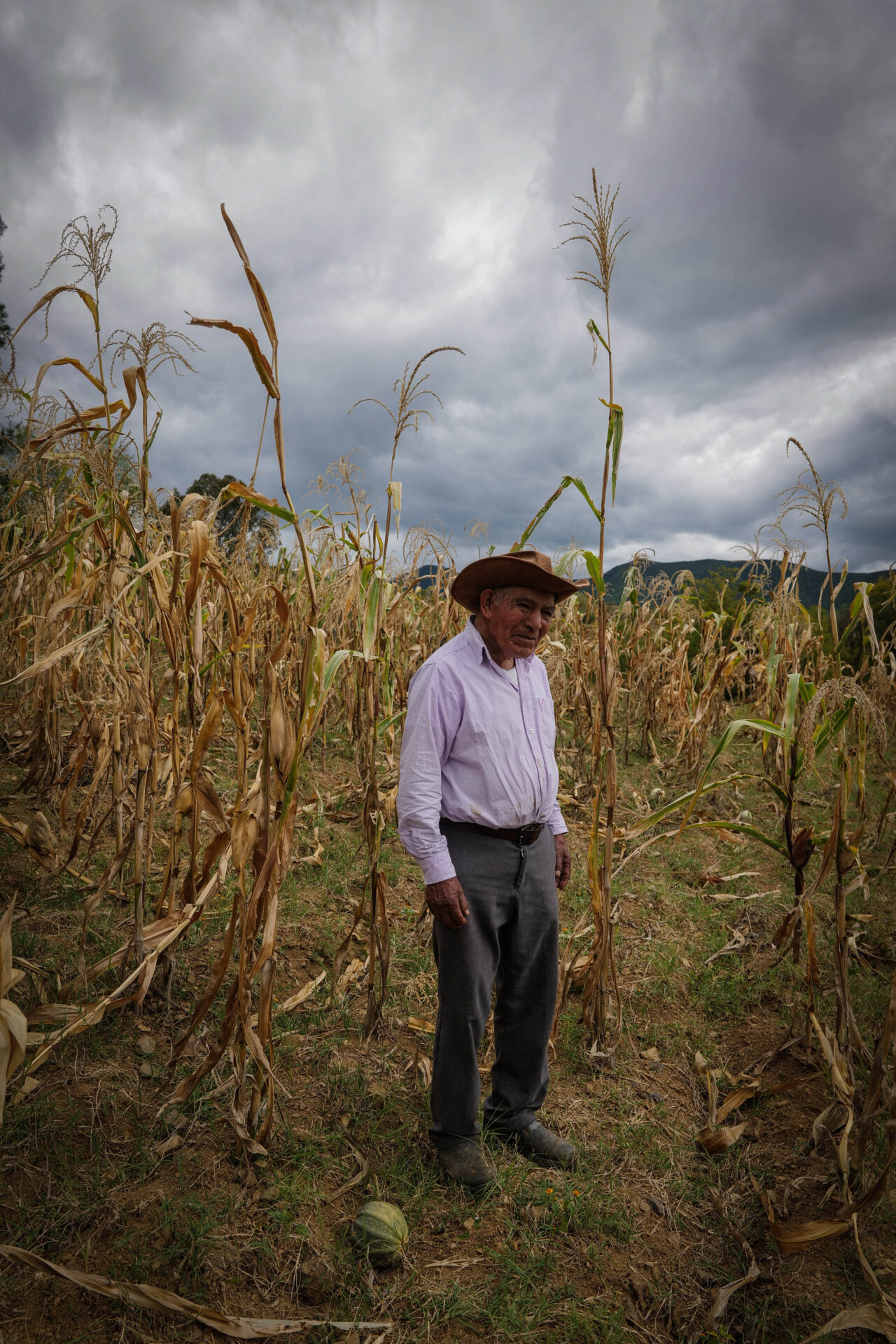
“When I was a child, I got to see two maize harvests in a year, it rained more,” remembers Pedro Santiago, 88, while walking in one of his farmlands in November 2023. This year, due to the drought, he lost his harvest of native maize, beans and squash that he planted with his family in the community of Huayapam, a municipality in the Central Valleys of Oaxaca, in Mexico.

Despite the loss of their native maize harvest and other products from the milpa, intended for self-consumption and sale, Pedro Santiago's family managed to rescue some small cobs in November 2023. This will allow them to preserve the seed that has been in his family for generations, in the community of Huayapam, a municipality in the Central Valleys of Oaxaca, in Mexico.
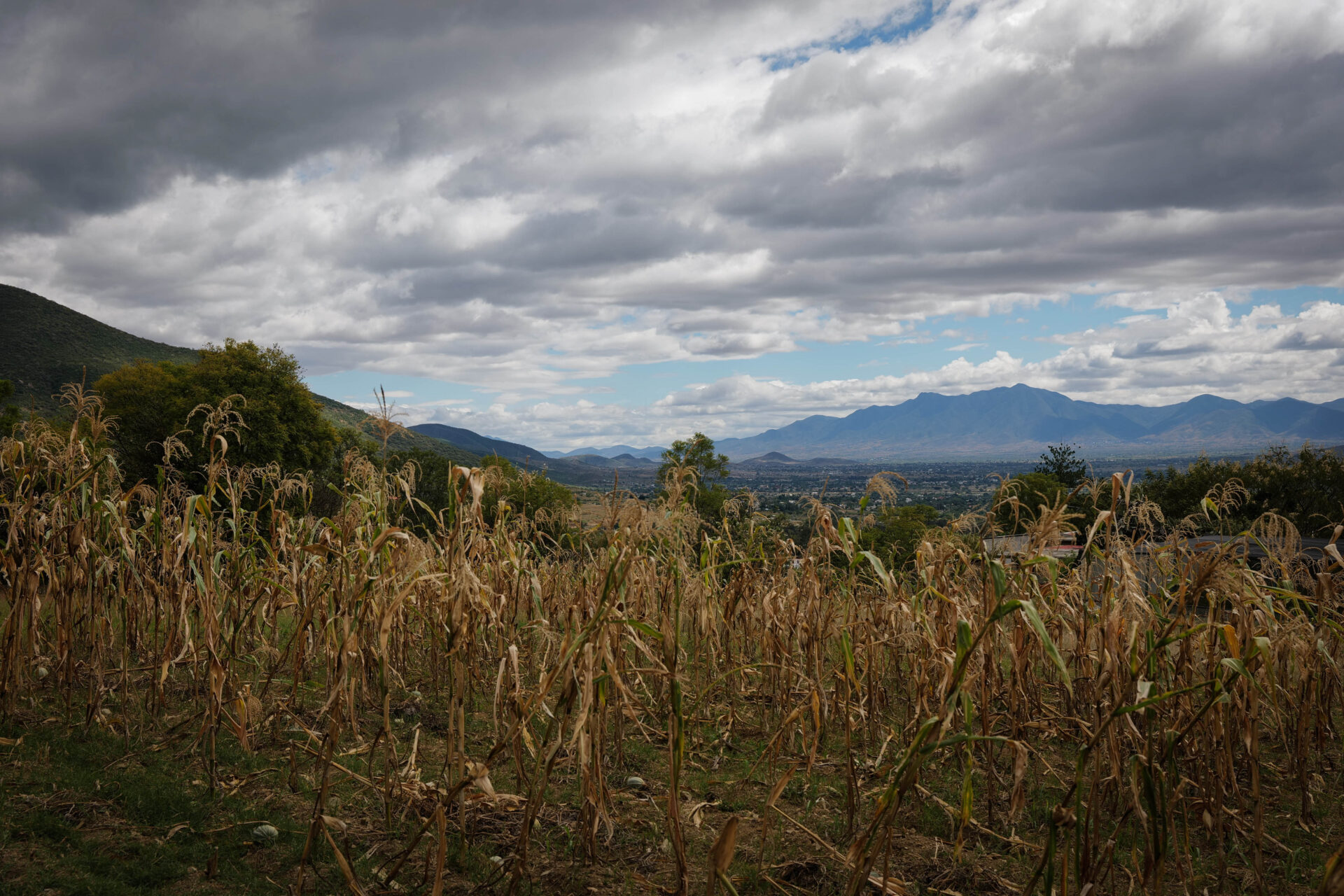
Based on estimates from the rain gauge from the Permaculture Demonstration Center, “El Pedregal”, located in Huayapam, during 2023 only a third of the rain fell compared to previous years. In the image, the Huayapam milpas look empty and dry, in November 2023. In the back you can see the city of Oaxaca, Mexico, where most small-scale producers market their products.
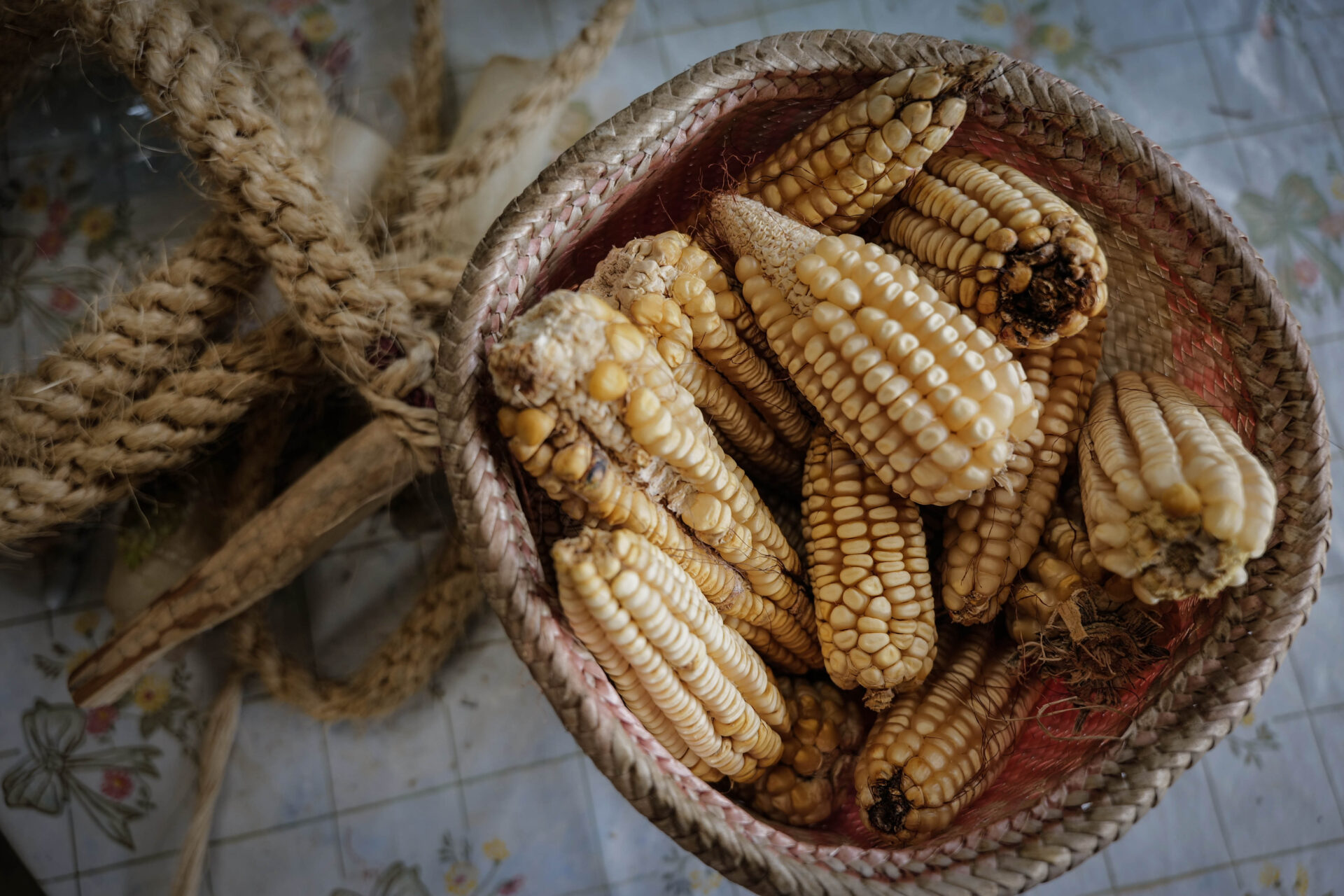
One of the main problems of rainfed agriculture has to do with inequality in the distribution of water since most irrigation systems are for industrial agriculture. Margarita Pérez's family, in Santa Cruz Etla, in Oaxaca, Mexico, managed to save one of her milpas by implementing irrigation. With this native maize and the products derived from this policulture, Margarita's family will have at least for their self-consumption and they will be able to preserve their seeds.

Margarita Pérez is originally from Santa Cruz Etla, located in the Central Valleys of Oaxaca, Mexico. She learned to work in the fields since she was a child with her family. In the image, Margarita walks through some of the crop fields where they lost the entire harvest, due to the severe drought that affected the state during 2023.

In addition to the traditional maize, bean, squash and chili milpa, Margarita's family has also have fruit trees, which were also affected by the drought and temperature variations caused by the climate change in Santa Cruz Etla, located in the Central Valleys of Oaxaca, in Mexico.
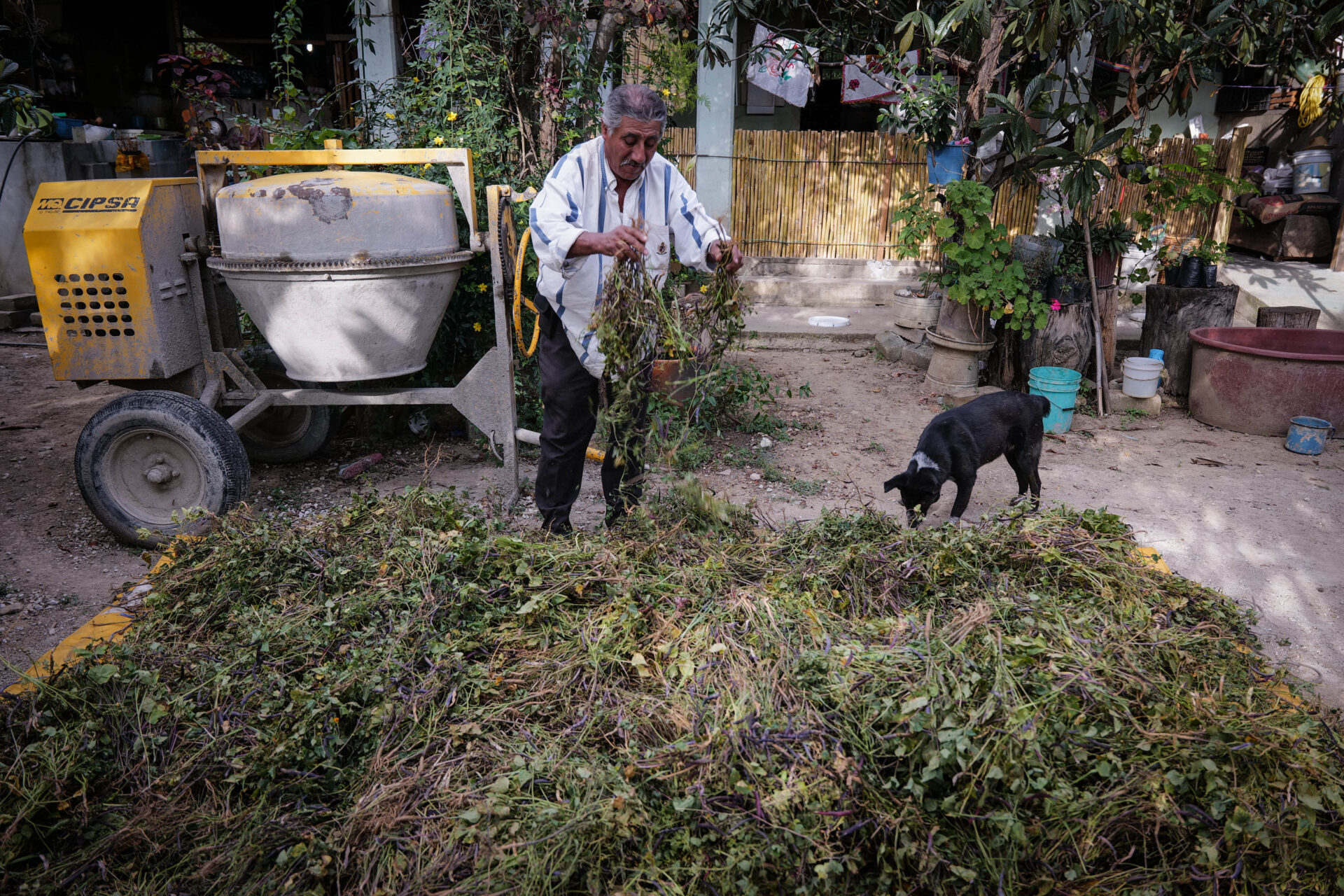
Edmundo Pérez, Margarita's brother, puts the family bean harvest to dry in November 2023 in Santa Cruz Etla, located in the Central Valleys of Oaxaca, in Mexico. In a good harvest season they manage to obtain up to 100 kilos of beans, however, this year they will only achieve between 8 and 10 kilos due to the drought.

Due to drought, lack of water and excess heat, the cobs harvested by peasant families in the Central Valleys of Oaxaca, in Mexico, during November 2023, are very small or rotted prematurely. However, planting the seeds that survived again will be essential to preserve biodiversity and genetic adaptability of native maize seeds, given the effects of climate change in the area.
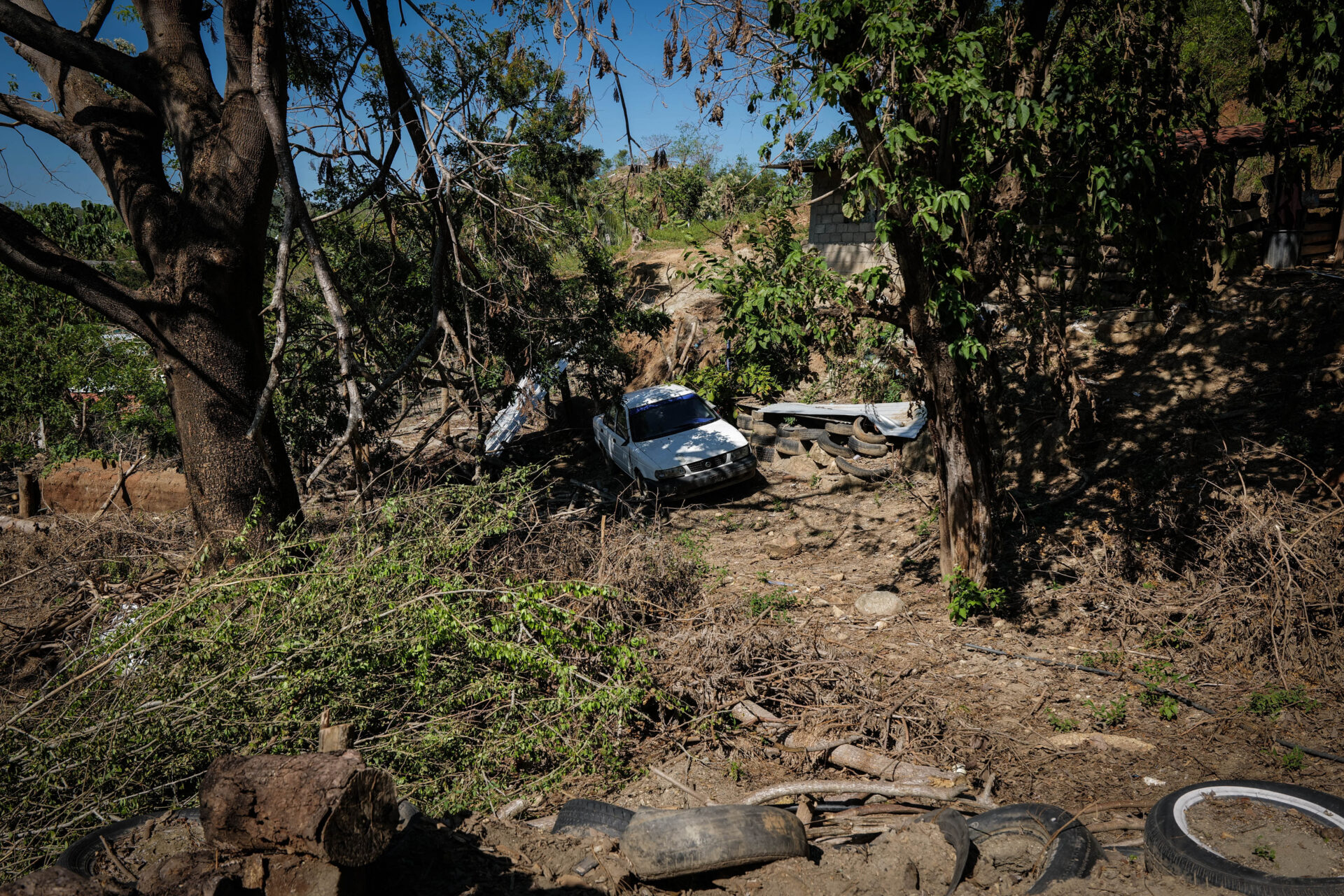
Hurricane Otis, category 5, made landfall on October 25th, 2023, affecting the coasts of Acapulco and five other municipalities in Guerrero, including Coyuca de Benítez, a rural community of peasant people who care for and plant native maize with ancestral methods and traditional agriculture. Until November 13th, 2023, the patio of Alejandro Hernández's house looks destroyed by the strong winds that caused the metal sheets roof to fly, and the fall of trees that destroyed his animals' shelter.
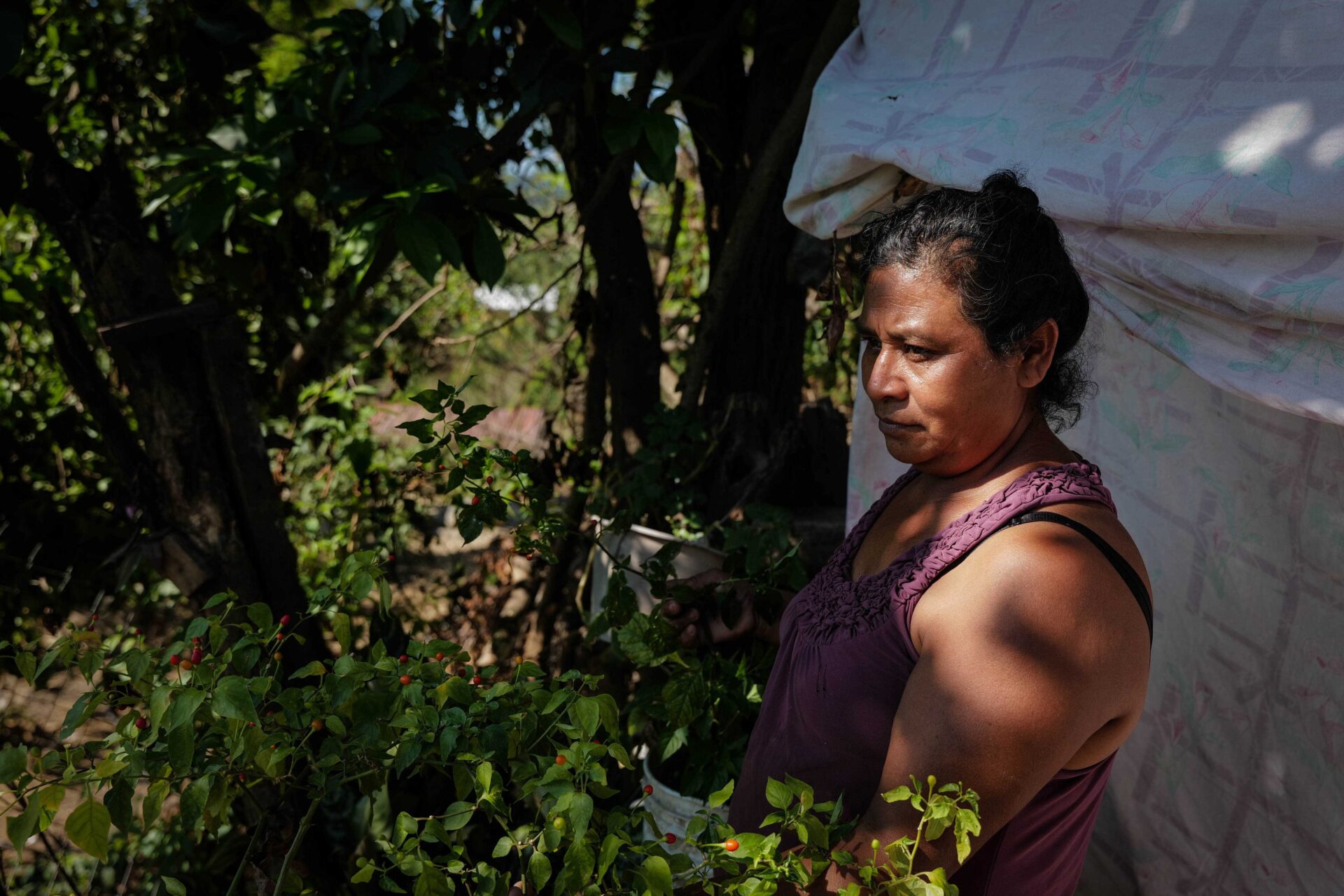
Aurelia Santos has a backyard where she plants chili, oregano, rosemary and some other herbs that she uses to cook at home, in the municipality of Coyuca de Benítez in Guerrero, Mexico. Despite the strong winds caused by Hurricane Otis, some of her plants survived and she is grateful to be able to rescue her seeds to replant them in November 2023.
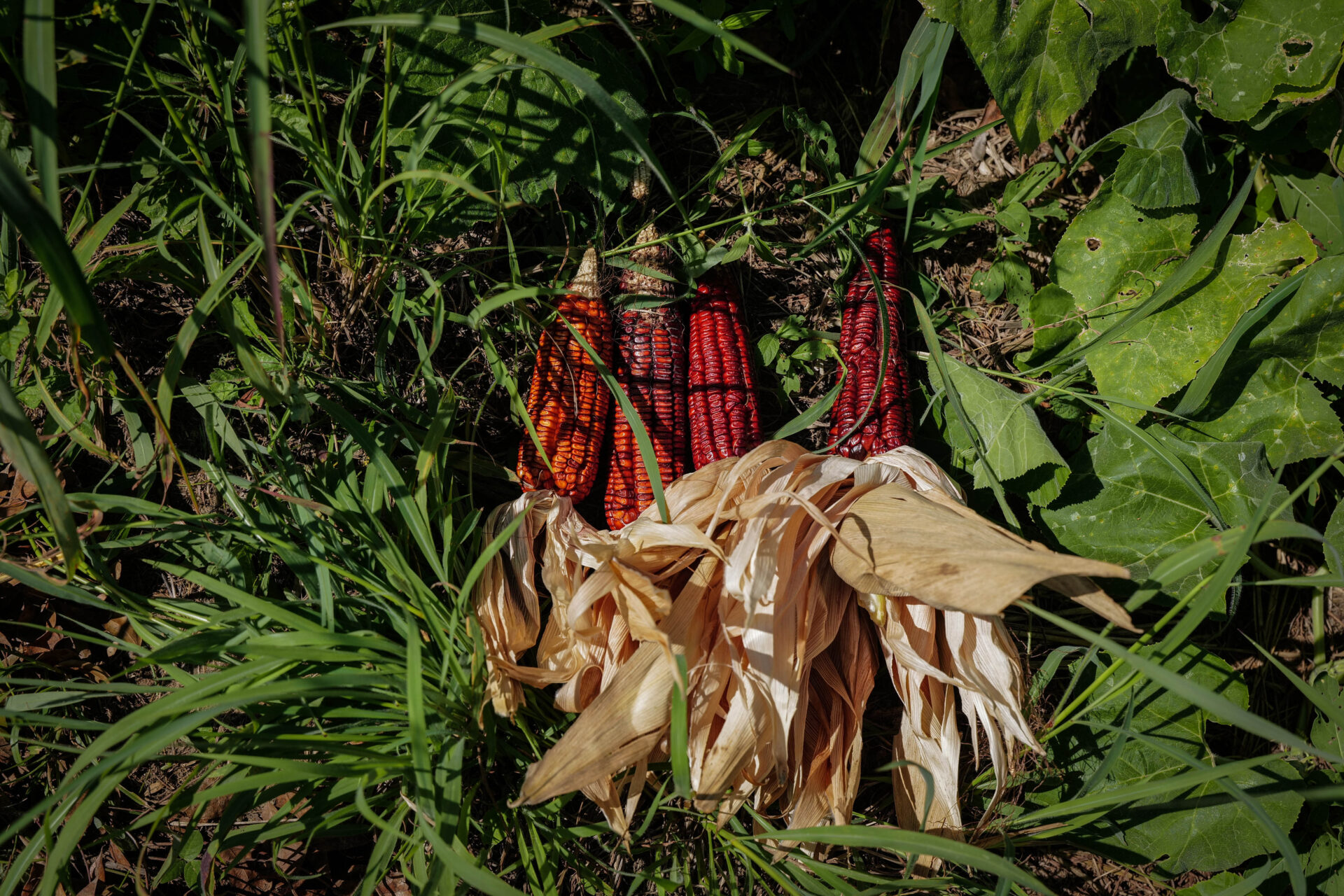
On November 13, 2023, Alejandro Hernández and his wife Aurelia Santos visited their milpa to rescue some products, in the municipality of Coyuca de Benítez in Guerrero, Mexico. Until a month before Hurricane Otis hit the area, they had planted 10 different varieties of native maize and other seeds native to the region.
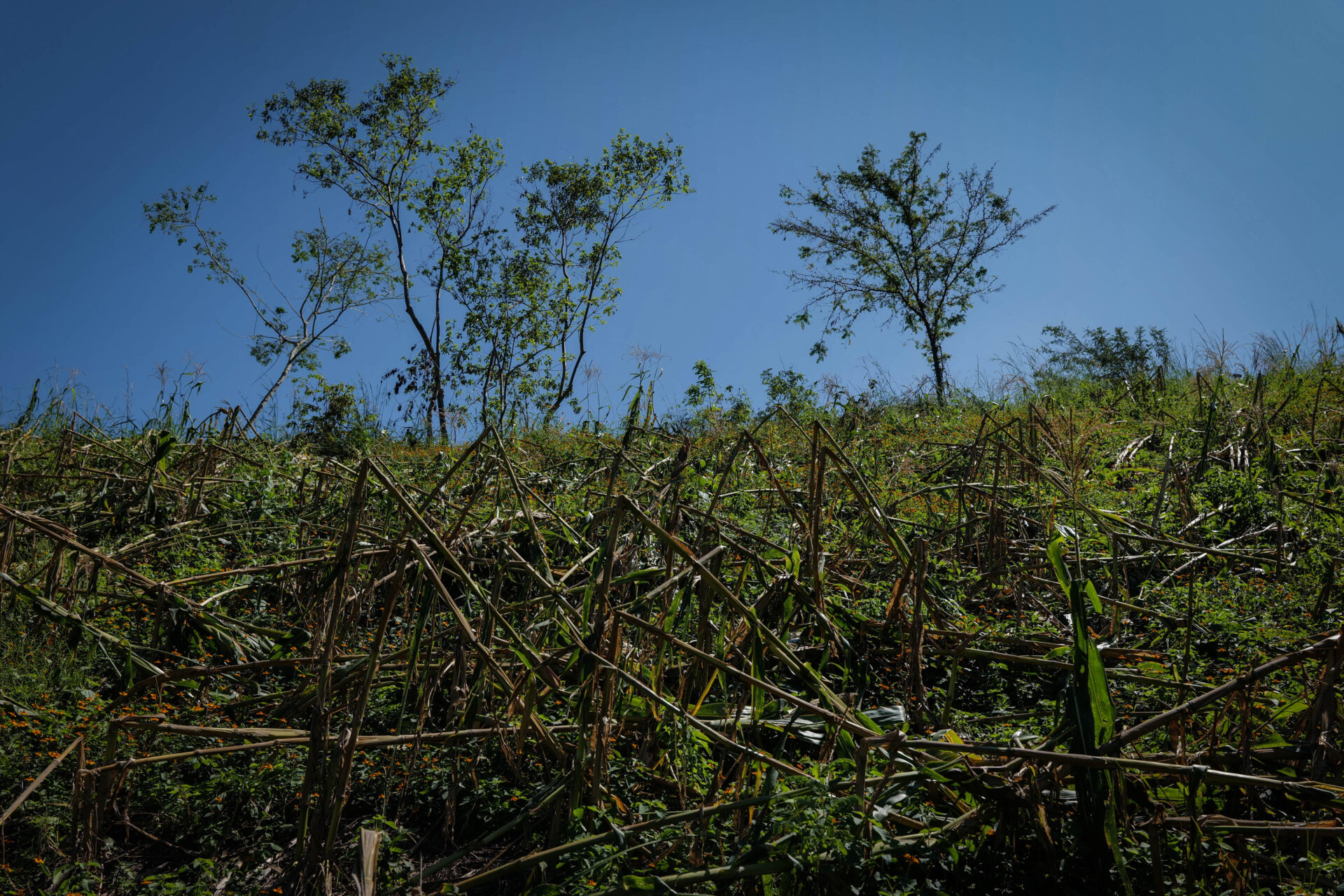
View of Aurelia and Alejandro's farmland in November 2023, after the passage of Hurricane Otis in the municipality of Coyuca de Benítez, in Guerrero, Mexico. In Alejandro's words: “We had ten (varieties) of maize, including white, red, purple, yellow and pinto, of different races: olotillo, olotón, tuxpeño, rabbit, ancho and some crossed; also two varieties of bules, two of trays, two of squashes and two of green beans or milperos, white and black. They are seeds that give life to the milpa, because what we sow is what we consume, and that is what we are.”
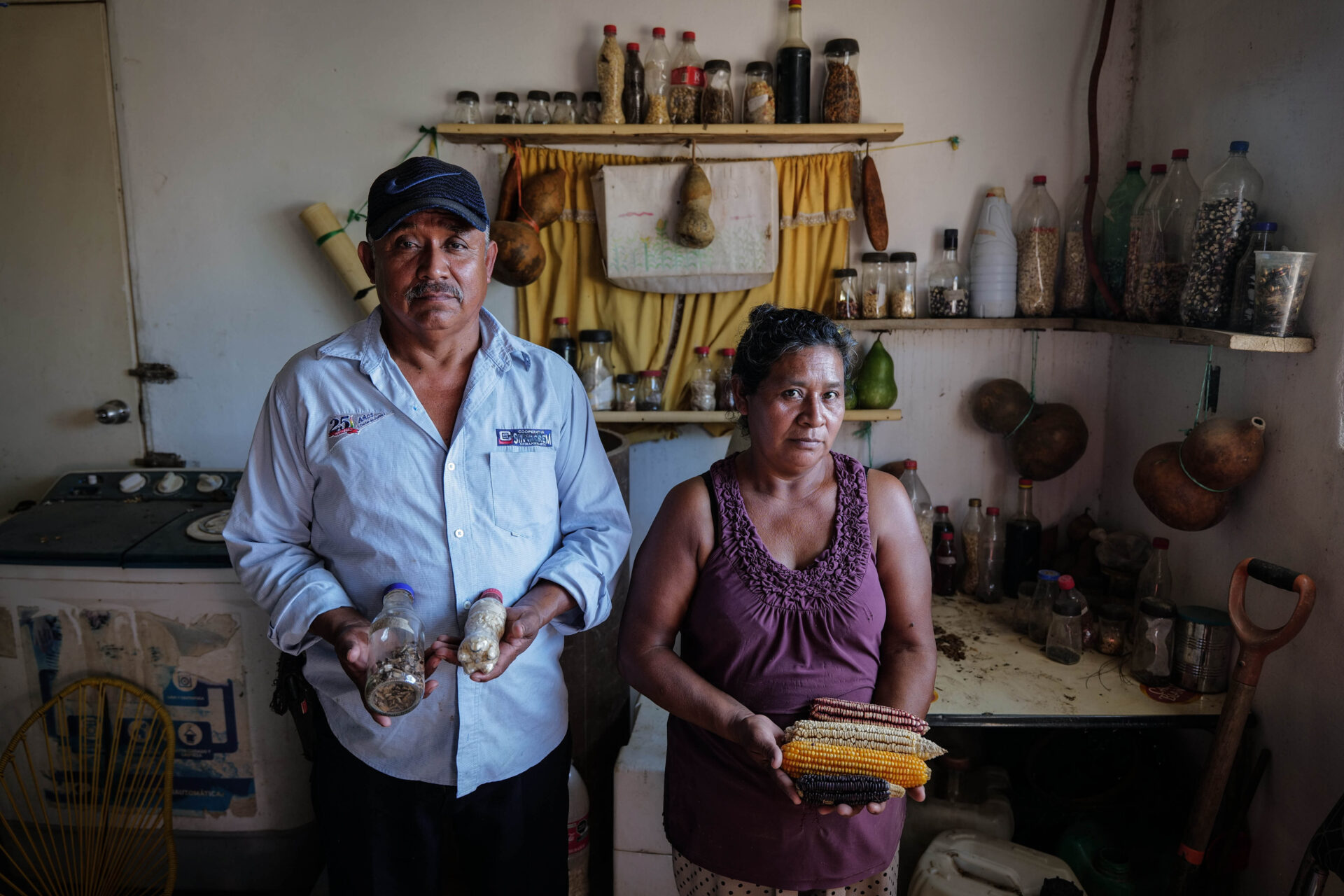
Aurelia and Alejandro's seeds have been in their families for generations, therefore, and in light of the climatic phenomena of recent years, they work together with the Guardians of Maize Network, in the municipality of Coyuca de Benítez in Guerrero, Mexico, to implement a seed fund of native maize and other plant varieties native to the area, since the peasant science that has been inherited for generations has made it clear to them that the conservation and adaptability of their seeds, through sowing, will be fundamental to confront food crises in the future.

On the outskirts of the touristic zone, in what is known as rural Acapulco, where the majority of people subsist on self-consumption, scenes like this are observed, where milpas and maize fields are completely devastated, in November 2023, due to the overflowing of rivers, strong winds and rains caused by Hurricane Otis that affected the state of Guerrero in Mexico.
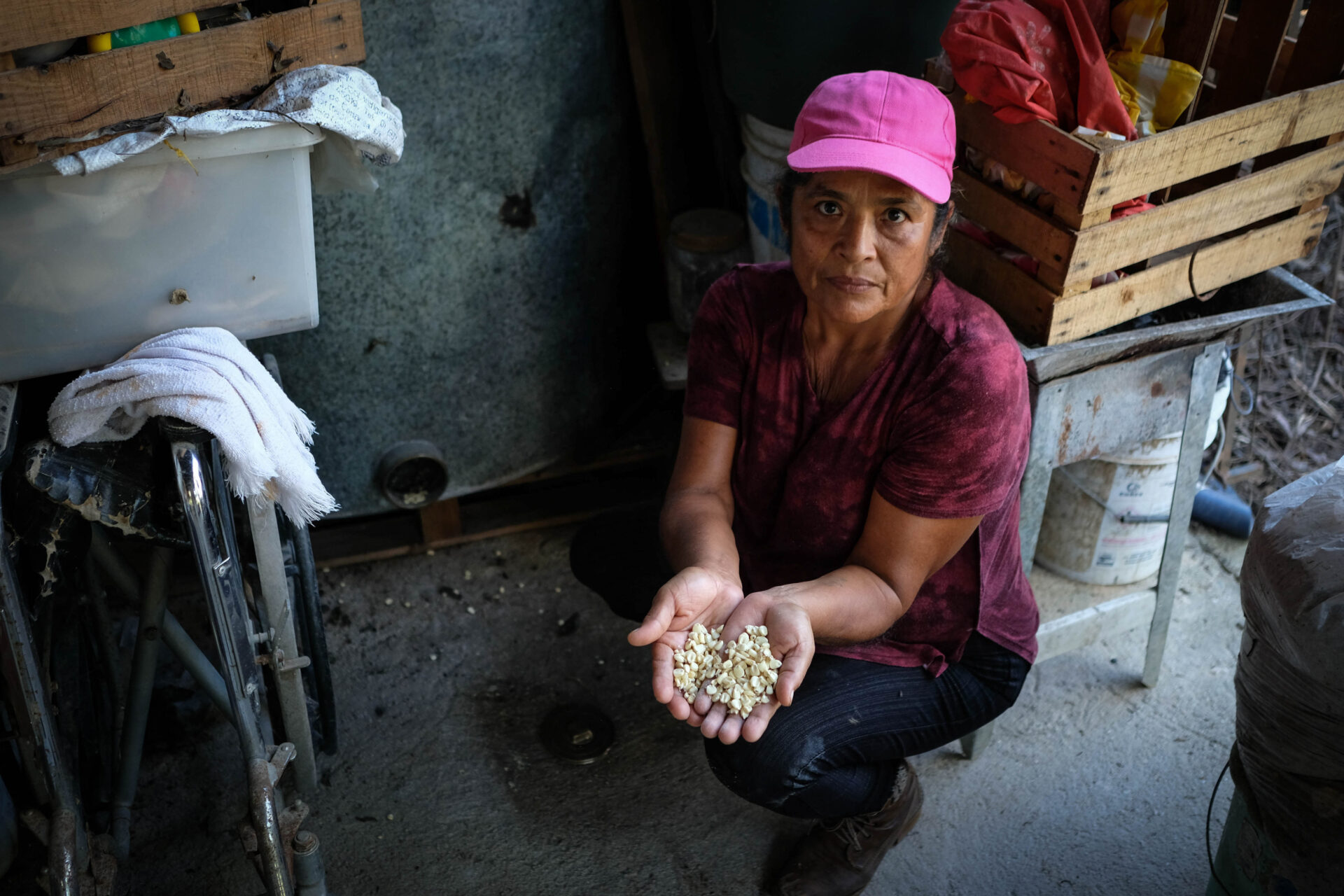
Diana Ramos shows some native maize seeds that her family has stored since last year's harvest, in the municipality of Acapulco, Guerrero, in Mexico, in November 2023. Thanks to these peasant grain storage practices, some of the families who lost their crops due to Hurricane Otis have managed to survive with a culturally appropriate diet, without having to accept super-processed foods with low nutritional value provided by the government.
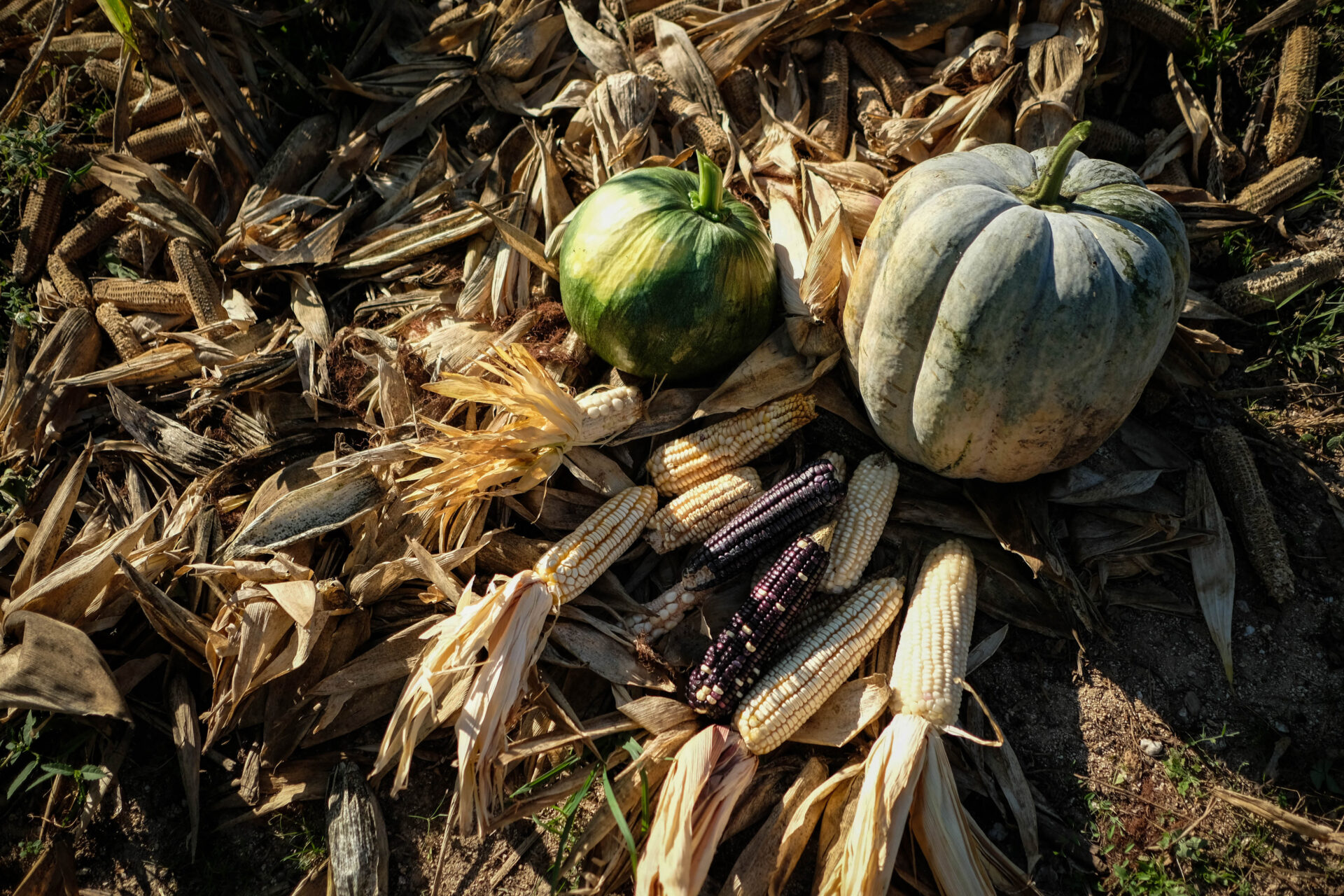
After Hurricane Otis and rearranging their houses a little, the peasant families of the municipality of Acapulco, Guerrero, in Mexico, and some other nearby rural areas, collect some cobs and other species to recover their seeds and prevent them from rotting with humidity. Until November 2023, their hope is to recover next year by sowing and adapting their seeds for future climate phenomena.

Diana Ramos and her husband Alejandro Martínez visited their milpa in the municipality of Acapulco, Guerrero, in Mexico, in November 2023. Hurricane Otis devastated their crops that were about to be harvested.
